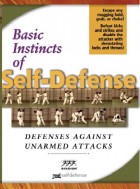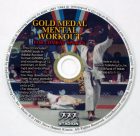Observe, Orient, Decide, Act: The OODA Loop
Training in an effective self-defense system shortens your OODA loop. OODA stands for Observe, Orient, Decide, Act. In the smallest-scale tactics (i.e., in hand-to-hand combat), the loop boils down to this simple interpretation:
Observe: Be alert. See what and who is around you.
Orient: As you observe, orient and position yourself so as not to be taken advantage of.
Decide: With correct training, you won’t need to decide details of your tactics should you need to apply them. You should make only general decisions such as move on, stay, or leave.
Act: Here, automatic habits formed by training take over — so you’d better train properly. The habits your training automatizes had better be useful, or you will be sorry.
Automatization of fighting techniques is easier if they are simple — it’s best if habits developed in one technique transfer to other techniques — as in Basic Instincts of Self-Defense. This system teaches very simple techniques, consisting of very easy movements. Those techniques can be learned nearly instantaneously and truly mastered in a few repetitions. Thanks to that you won’t need to consciously direct your actions. This cuts down on the duration of your Act.
Ideally, Observe and Orient should be combined and Decide and Act fused together by practice, so the opponent’s action triggers your automatic reaction, without your needing to decide. Even below such a level of automatization, not having to think about your movements improves your reaction time because reaction time is shorter when set on “signal” than when set on “action.” (For example, if you are in a car stopped at a red light and you are thinking “green,” you will move faster than if you are thinking “green: press the gas pedal.”)
Self-defense tip from Thomas Kurz, co-author of Basic Instincts of Self-Defense and author of Science of Sports Training, Stretching Scientifically, and Flexibility Express.
Self-Defense Moves
For your defense moves to work under stress they must be based on your natural, instinctive reactions, require little strength and limited range of motion, and be proven in fighting experience.To learn how your natural reactions can instantly defeat any unarmed attack, see the video Basic Instincts of Self-Defense.
Defend Against Weapons
To defend against weapons you have to know how they are used. Also — every stick has two ends … the weapon of attack may become a weapon of defense in your hand …To learn how the typical street weapons (club, knife, razor) are used by an experienced streetfighter and how to practice with them, see the video Self-Defense: Tools of Attack — Club, Hatchet, Blackjack, Knife, Straight Razor.
Mental Toughness
Staying cool under pressure is more important for self-defense than being physically fit and technically skilled. If you can’t control your mind what can you control?To learn mental techniques that let you calmly face any threat and act rationally in the heat of a fight, click here.
For a complete list of our products, click here.







